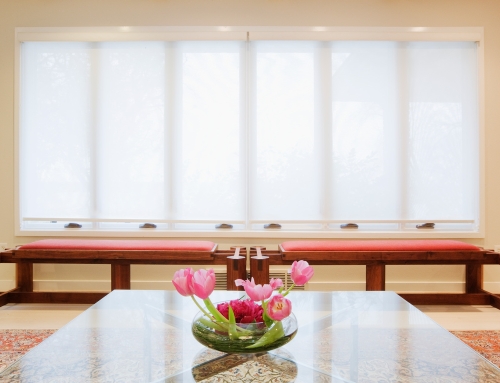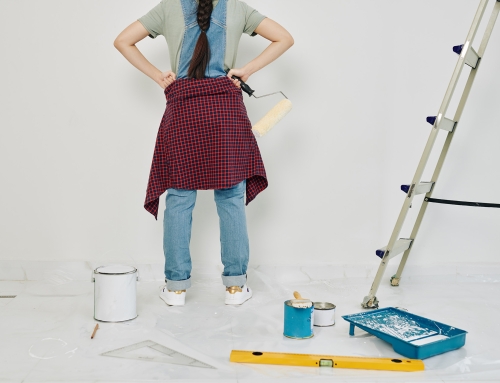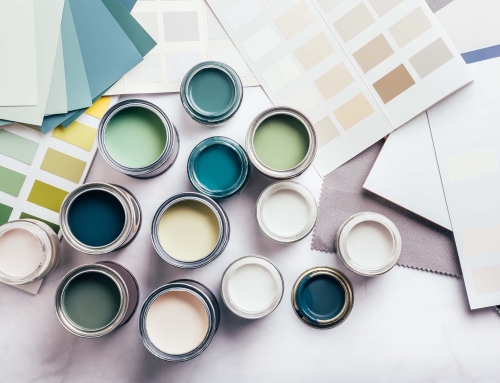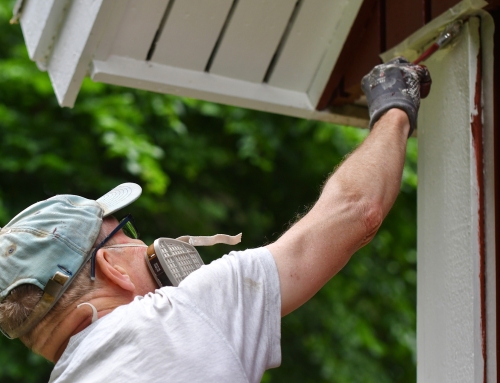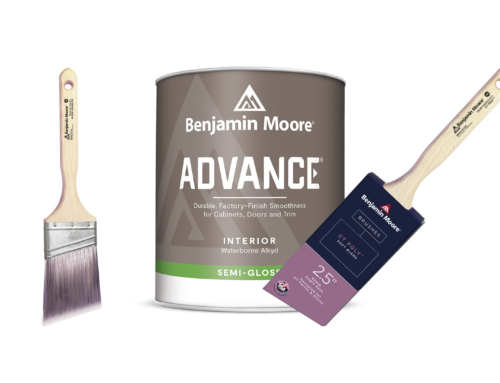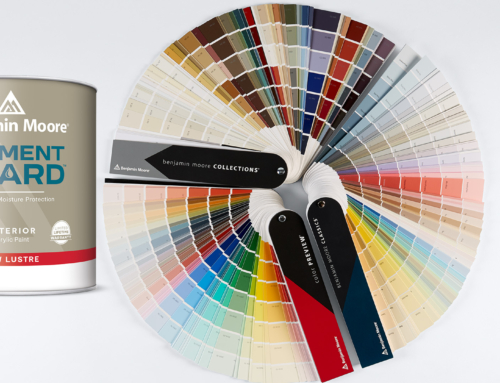How to Prepare a Room for Wallpapering: A Comprehensive Guide
Wallpapering is a fantastic way to bring personality and charm to any room. Whether you’re going for a bold, dramatic look or something subtle and sophisticated, wallpaper can transform your space like no other decorating method. However, the key to achieving a flawless finish lies in the preparation. Properly preparing your room before wallpapering ensures that your wallpaper adheres well and looks impeccable for years to come. In this comprehensive guide, we’ll walk you through every step of the process to ensure you’re ready to wallpaper like a pro.
Table of Contents
- Gathering Your Tools and Materials
- Essential Tools
- Materials Needed
- Safety Gear
- Assessing and Preparing the Walls
- Inspecting Wall Conditions
- Repairing Wall Imperfections
- Cleaning the Walls
- Removing Old Wallpaper
- Tools for Wallpaper Removal
- Techniques for Different Types of Wallpaper
- Dealing with Stubborn Wallpaper
- Priming and Sealing the Walls
- Importance of Priming
- Types of Primers
- Application Tips
- Measuring and Marking the Walls
- Accurate Measurements
- Marking Guidelines
- Calculating Wallpaper Rolls
- Protecting the Room and Furniture
- Moving and Covering Furniture
- Protecting Floors and Fixtures
- Ensuring Adequate Ventilation
- Final Checks and Pre-Wallpapering Tips
- Double-Checking Wall Preparation
- Temperature and Humidity Considerations
- Preparing Your Wallpaper Paste
1. Gathering Your Tools and Materials
Before you begin, it’s crucial to have all the necessary tools and materials at hand. This preparation saves time and ensures a smoother workflow.
Essential Tools
- Tape measure
- Level
- Pencil
- Utility knife
- Wallpaper smoother
- Seam roller
- Sponge or cloth
- Bucket
- Step ladder
Materials Needed
- Wallpaper
- Wallpaper paste (if not pre-pasted)
- Wallpaper primer
- Wall filler or spackle
- Sandpaper
- Drop cloths or plastic sheeting
Safety Gear
- Gloves
- Safety goggles
- Dust mask (for sanding)
2. Assessing and Preparing the Walls
Proper wall preparation is crucial for a smooth, long-lasting wallpaper application. Here’s how to ensure your walls are ready.
Inspecting Wall Conditions
Start by thoroughly inspecting your walls. Look for any imperfections such as cracks, holes, or peeling paint. These issues need to be addressed to create a smooth surface for your wallpaper.
Repairing Wall Imperfections
- Filling Holes and Cracks: Use wall filler or spackle to fill any holes or cracks. Apply the filler with a putty knife, smooth it out, and let it dry completely.
- Sanding Rough Areas: Once the filler is dry, sand the areas to make them smooth. Use fine-grit sandpaper to avoid damaging the wall surface.
Cleaning the Walls
- Dust and Debris: Remove any dust or debris from the walls using a damp sponge or cloth.
- Grease and Stains: For grease or stains, use a mild detergent solution. Rinse with clean water and let the walls dry completely.
3. Removing Old Wallpaper
If your walls already have wallpaper, it’s essential to remove it before applying new wallpaper. This step ensures better adhesion and a smoother finish.
Tools for Wallpaper Removal
- Wallpaper scraper
- Wallpaper removal solution or steamer
- Scoring tool (for vinyl or tough wallpapers)
Techniques for Different Types of Wallpaper
- Peelable Wallpaper: Start at a corner and gently peel back the wallpaper. Use a scraper to assist if necessary.
- Strippable Wallpaper: Similar to peelable, but may require more effort and the use of a scoring tool if it’s particularly stubborn.
- Traditional Wallpaper: Soak the wallpaper with a removal solution or use a steamer to loosen the adhesive. Scrape off the paper gently.
Dealing with Stubborn Wallpaper
For particularly stubborn wallpaper, repeat the soaking or steaming process. Patience is key to avoid damaging the wall surface.
4. Priming and Sealing the Walls
Priming your walls is a crucial step that should not be overlooked. It helps create a smooth, uniform surface that enhances wallpaper adhesion.
Importance of Priming
Priming seals the wall, preventing the adhesive from soaking into the wall surface. This ensures better adhesion and makes future wallpaper removal easier.
Types of Primers
- Wallpaper Primer: Specifically designed for wallpaper application.
- PVA Primer: Seals porous surfaces and creates a good base for wallpaper.
Application Tips
- Apply the primer evenly using a roller or brush.
- Allow the primer to dry completely before proceeding with wallpaper application.
5. Measuring and Marking the Walls
Accurate measurements and markings are crucial for a professional finish. Here’s how to get it right.
Accurate Measurements
- Measure the height and width of your walls to determine how much wallpaper you’ll need.
- Account for pattern repeats when calculating the amount of wallpaper.
Marking Guidelines
- Use a level and pencil to draw vertical guidelines on the wall. These lines will help you align your wallpaper strips accurately.
Calculating Wallpaper Rolls
- Refer to the wallpaper packaging for coverage details.
- Ensure you have enough rolls, including extra for mistakes or future repairs.
6. Protecting the Room and Furniture
Protecting your room and furniture from damage during wallpapering is essential.
Moving and Covering Furniture
- Move furniture out of the room if possible. If not, move it to the center and cover with plastic sheeting or drop cloths.
Protecting Floors and Fixtures
- Cover the floors with drop cloths to catch any paste or debris.
- Use painter’s tape to protect fixtures, trim, and baseboards.
Ensuring Adequate Ventilation
- Open windows and doors to ensure good ventilation. This helps the wallpaper paste to dry properly and reduces any fumes from adhesives or primers.
7. Final Checks and Pre-Wallpapering Tips
Before you start hanging wallpaper, a few final checks and preparations can make a big difference.
Double-Checking Wall Preparation
- Ensure all wall repairs, sanding, and cleaning are complete.
- Confirm that the primer is fully dry.
Temperature and Humidity Considerations
- Ideal temperature: 60-70°F (15-21°C).
- Avoid high humidity environments to ensure the wallpaper adhesive dries correctly.
Preparing Your Wallpaper Paste
- If using unpasted wallpaper, prepare your paste according to the manufacturer’s instructions.
- Ensure you have a clean, accessible area to mix and apply the paste.
Conclusion
By following these detailed steps, you’ll set the stage for a successful wallpapering project. Proper preparation not only makes the process smoother but also ensures a beautiful and lasting finish. So, gather your tools, take your time with the prep work, and enjoy the transformation that wallpaper brings to your space.
Happy wallpapering!




